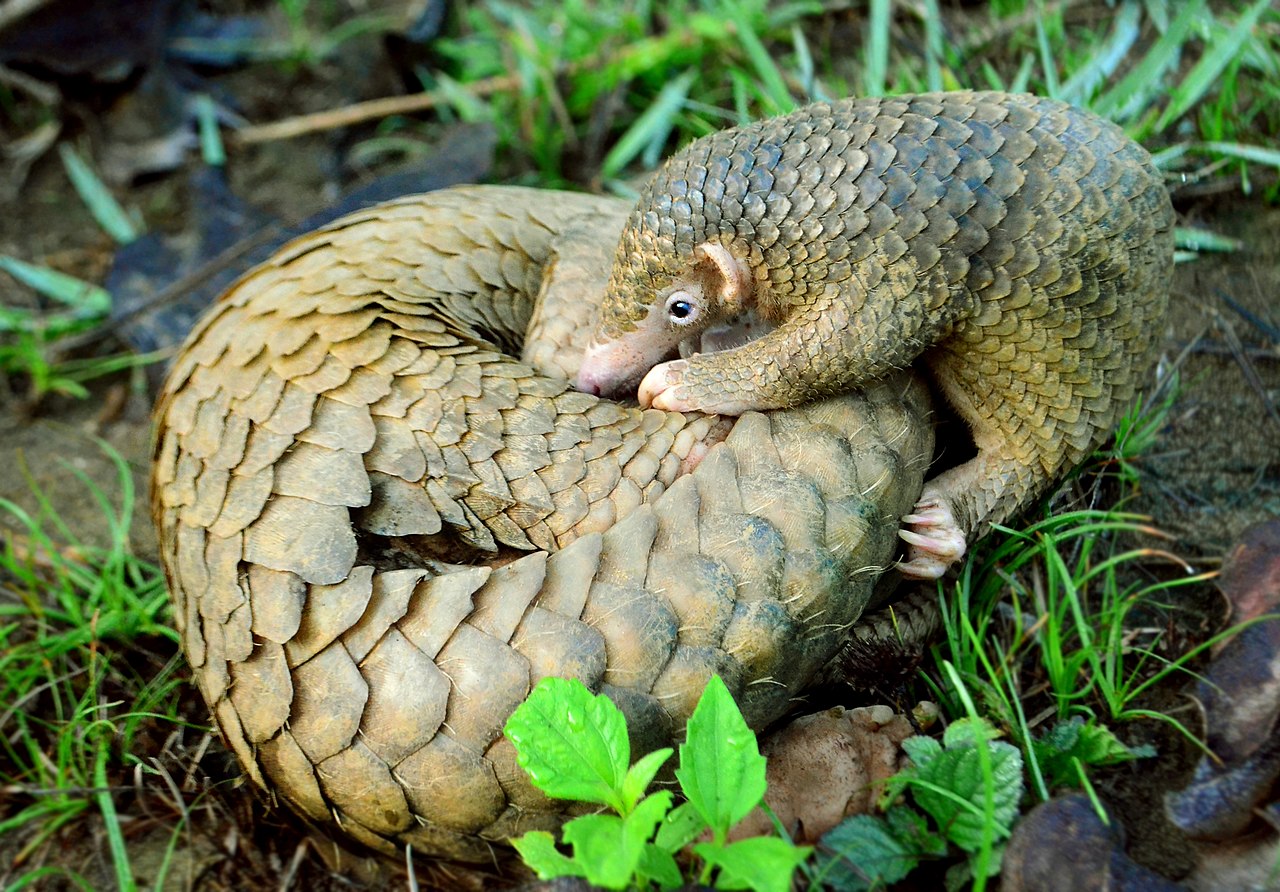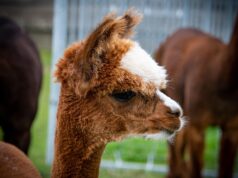- Pangolins are unique mammals known for their scaly exteriors, making them resemble walking artichokes.
- They are the only mammals in the world covered in scales, which are made of keratin, the same material found in human nails.
- Pangolins are found in Africa and Asia, inhabiting various habitats from forests to grasslands.
- There are eight known species of pangolins, with four species found in Africa and four in Asia.
- Pangolins are highly specialized insectivores, primarily feeding on ants and termites.
- They have long tongues, which can extend up to 40 centimeters (16 inches), allowing them to reach deep into insect nests.
- Pangolins lack teeth, but their stomachs contain hardened keratinous plates that aid in grinding food.
- When threatened, pangolins can curl up into a tight ball, using their scales as armor to protect themselves from predators.
- Pangolins have poor eyesight but compensate with a strong sense of smell and hearing.
- They are solitary animals, except during breeding season or when mothers are caring for their young.
- Pangolins have a slow metabolism, which helps them conserve energy and survive on a diet of low-nutrition insects.
- Their scales act as insulation, protecting them from extreme temperatures and predators.
- Pangolins are nocturnal creatures, being most active during the night.
- Some species of pangolins can emit a strong-smelling secretion from their anal glands as a defense mechanism.
- Pangolins are excellent climbers and can scale trees using their sharp claws.
- They have prehensile tails that help them balance while climbing and walking on the ground.
- Pangolins are known to be excellent diggers, creating burrows for shelter and foraging.
- The scales of pangolins are highly sought after in illegal wildlife trade, making them one of the most trafficked mammals in the world.
- Pangolins are protected by international laws and conservation efforts due to their vulnerable status.
- Female pangolins give birth to a single pup, which they carry on their tails until it is old enough to be independent.
- Pangolins have been around for millions of years, with fossil evidence dating back to the Eocene epoch.
- Some cultures believe that pangolin scales have medicinal properties, leading to their use in traditional medicines.
- Pangolins are also known as “scaly anteaters” due to their similar diet and long, sticky tongues.
- Pangolins have a low reproduction rate, with females typically giving birth to one or two offspring per year.
- The name “pangolin” comes from the Malay word “pengguling,” which means “something that rolls up.”
- Pangolins play an important role in ecosystems as insect controllers, helping to keep ant and termite populations in check.
- Their scales are unique to each individual, similar to human fingerprints.
- Pangolins can consume thousands of ants and termites in a single day, thanks to their efficient digestive systems.
- The demand for pangolin meat and scales in some regions has led to their population decline and threatened their survival.
- Pangolins use their sharp claws to break open termite mounds and ant hills while foraging.
- Pangolins can swim and are known to cross rivers and bodies of water.
- The average lifespan of a pangolin in the wild is estimated to be around 10 to 20 years.
- Pangolins are non-aggressive animals and prefer to avoid confrontation rather than engage in fights.
- The scales of pangolins are lighter in color when they are young and darken with age.
- Pangolins have a unique gait when walking, using their front and hind legs on one side of the body simultaneously.
- They have a keen sense of touch, with specialized receptors in their snouts that help them locate prey.
- Pangolins have been recognized as “flagship species” for conservation efforts, bringing attention to the need for protecting their habitats and addressing illegal trade.
- Pangolins are sometimes called “living fossils” due to their resemblance to ancient mammalian species.
- Pangolins are not typically aggressive toward humans and will usually try to flee when approached.
- Pangolins can emit soft vocalizations, including hissing sounds and clicking noises.
- The saliva of pangolins contains compounds that help protect them from ant bites and termite stings.
- Pangolins are known for their exceptional digging abilities, using their forelimbs and powerful claws to excavate burrows.
- Pangolins have a slow walking pace but can quickly accelerate to escape from predators.
- The scales of pangolins provide a layer of protection against external injuries and bites.
- Some cultures consider pangolins a delicacy and a symbol of wealth, leading to their consumption in certain traditional dishes.
- Pangolins have been observed using logs or rocks as tools to break into termite mounds.
- They are capable of conserving water and can survive in arid environments.
- Pangolins have a low body temperature, which helps reduce water loss and conserves energy.
- The scales of pangolins have been used in various crafts and traditional jewelry.
- Pangolins are fascinating and unique creatures that play an important ecological role, highlighting the need for conservation and protection efforts to ensure their survival for future generations.
Facebook Comments

































